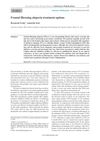Reversible Hair Loss in Lichen Planopilaris: Regrowth With Low-Dose Naltrexone and Platelet-Rich Plasma
May 2022
in “
Journal of Drugs in Dermatology
”
TLDR Low-dose naltrexone and platelet-rich plasma can regrow hair in lichen planopilaris.
A 46-year-old woman with biopsy-confirmed lichen planopilaris (LPP) experienced significant hair regrowth in a previously scarred alopecic patch after treatment with low-dose naltrexone (LDN) and platelet-rich plasma (PRP). This occurred despite minimal response to prior therapies, including intralesional corticosteroids, topical clobetasol, topical minoxidil, finasteride, doxycycline, and ketoconazole shampoo. This case underscores the potential of LDN and PRP as effective treatments for LPP and highlights the need for more comprehensive research on treatment options and prognosis for LPP patients.







